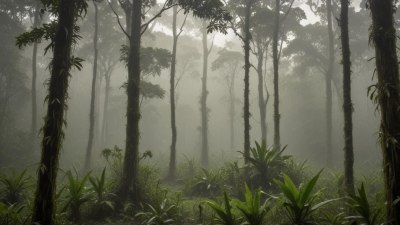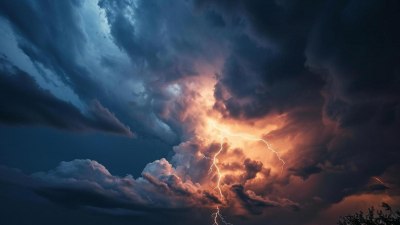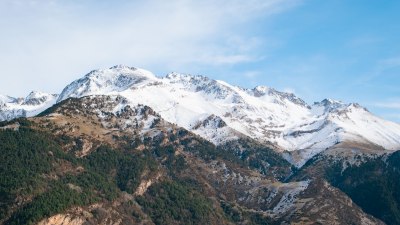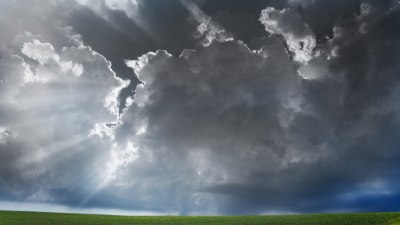How the Amazon Rainforest Controls More Weather Than Your Forecast App
Explore the vital role of the Amazon Rainforest in regulating weather patterns and climate stability.

This image was created with the assistance of Freepik
The Amazon Rainforest, often referred to as the 'lungs of the Earth', plays an essential role in climate regulation and is a keystone in controlling global weather patterns. This vast expanse of tropical forest spans across several countries in South America, primarily Brazil, Peru, and Colombia, covering approximately 5.5 million square kilometers. The unique blend of biodiversity, large-scale water cycling, and carbon sequestration defines how this majestic rainforest impacts not just its local environment, but global weather systems as well.
One of the most significant ways the Amazon influences weather is through the process of transpiration. Trees release water vapor into the atmosphere as they absorb sunlight and convert carbon dioxide into oxygen. This release of moisture contributes to cloud formation and ultimately affects precipitation patterns. In fact, studies suggest that the Amazon generates about half of its own rainfall through this process, and impacts weather as far away as North America. It plays a crucial role in maintaining the hydrological cycle across the continent.
Transpiration and Its Impact
Transpiration transcends mere water release; it is an integral component of local weather system dynamics. The moisture emitted from the forest contributes to a humid microclimate, enabling the growth of dense vegetation. This, in turn, leads to increased cloud cover and rainfall. The dense canopy of the rainforest traps moisture, leading to a self-sustaining water cycle that not only nourishes the forest itself but also supports surrounding ecosystems. Disruption of this cycle due to deforestation and climate change risks altering precipitation patterns.
Moreover, the Amazon Rainforest has an essential function as a larger weather system regulator. This region significantly influences atmospheric pressure systems and wind patterns across South America and beyond. The interaction between the heat generated by the rainforest and the cooler temperatures found in surrounding areas creates pressure differentials that drive wind patterns, impacting weather conditions not just locally, but across the globe.
Carbon Sequestration and Climate Regulation
The Amazon's ability to sequester carbon is another vital factor in controlling weather. Trees absorb carbon dioxide, a greenhouse gas that contributes to global warming. By sequestering carbon, the Amazon acts as a buffer against climate change, reducing the amount of carbon dioxide available in the atmosphere. This engagement helps mitigate extreme weather events that can arise from climate change, including droughts and intense storms.
Additionally, healthy forests are crucial for maintaining biodiversity, which contributes to ecosystem resilience and stability. Biodiversity itself has a role in weather regulation since diverse ecosystems are better equipped to adapt to changes and maintain necessary environmental processes. This ensures that the delicate balance of weather and climate regulation continues, protecting local and global climates alike.
The Role of Deforestation
Deforestation poses one of the biggest threats to Amazonian weather regulation. As trees fall, the intricate balance of moisture release and carbon sequestration is disrupted. Studies indicate that a single hectare of rainforest can release up to 150 tons of carbon dioxide into the atmosphere when cleared. This significant loss accelerates global warming, leading to changes in weather patterns and increased occurrences of severe weather events.
Moreover, deforestation opens the floodgates for more abrupt weather changes. The removal of trees affects local humidity levels, diminishing the moisture available for clouds and precipitation. This leads to droughts in some areas while increasing the risk of flooding in others due to sudden, intense rainfall. As the intricate web of interactions in the rainforest is disrupted, the broader climatic effects can be substantial and potentially irreversible.
Climate Change and the Amazon's Future
The Amazon is now increasingly vulnerable due to changing climatic conditions. Rising global temperatures precipitate shifts in rainfall patterns, meaning that regions within and around the rainforest may experience prolonged droughts, altering the composition of the forest ecosystem. This shifts the balance of species and may lead to forest dieback, further exacerbating the already daunting climate challenges.
Scientists stress the importance of acting now to preserve the Amazon. Protecting and restoring this vital forest is paramount not only for local climates but for global climate stability. Reforestation efforts, conservation practices, and stringent policies on land use are key components in addressing these challenges. They contribute essential resources back to both local communities and the planet's overall health.
Technological Advances in Monitoring
Technological advancements in monitoring environmental changes have become increasingly crucial in understanding the Amazon's role in weather control. Satellite data, remote sensing technology, and climate modeling allow scientists to monitor deforestation rates, assess carbon storage, and predict future climatic changes effectively. This technology provides insights into how the Amazon interacts with other regions, expanding our understanding of the forest's imminent threats and opportunities for mitigation.
Such monitoring enables real-time feedback, alerting governments and conservation organizations to emerging hazards, allowing for timely responses. Given that weather does not recognize human boundaries, fostering international collaboration is essential. The Amazon spans multiple countries, and conservation efforts must be cross-border; unified action is necessary to create impactful change.
Promoting Sustainable Practices
Pragmatic approaches toward sustainable development are vital for curbing the impacts of deforestation and climate change. By promoting agroforestry, responsible land management, and eco-tourism, we can create pathways that serve the economic needs of local populations while preserving the forest. These initiatives position local communities at the forefront of conservation efforts, enhancing their livelihoods and ensuring collective action toward sustainability.
Engaging indigenous communities who have historically lived in harmony with the rainforest is also critical. Their traditional knowledge combined with modern conservation techniques can offer holistic solutions that enhance forest resilience, reinforcing the understanding necessary to tackle imminent environmental challenges.
The Future of Global Weather
The Amazon Rainforest is a critical player in climate and weather regulation on a global scale. Its expansive biodiversity, effective water cycling, and unique interactions with atmospheric systems profoundly shape weather patterns far beyond its borders. Recognizing its importance and taking action to mitigate the threats posed by human activities like deforestation and climate change is essential for the future of our planet. The preservation of the Amazon not only safeguards its own ecosystems but also plays a vital role in stabilizing global weather patterns, proving that nature performs essential services that no forecasting app can replicate. Thus, investing in its protection and restoration is investing in the health and stability of the worldwide environment.











